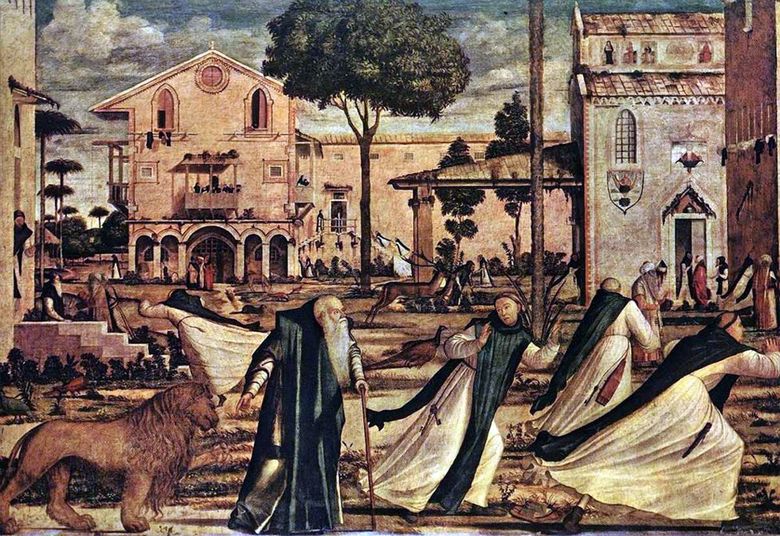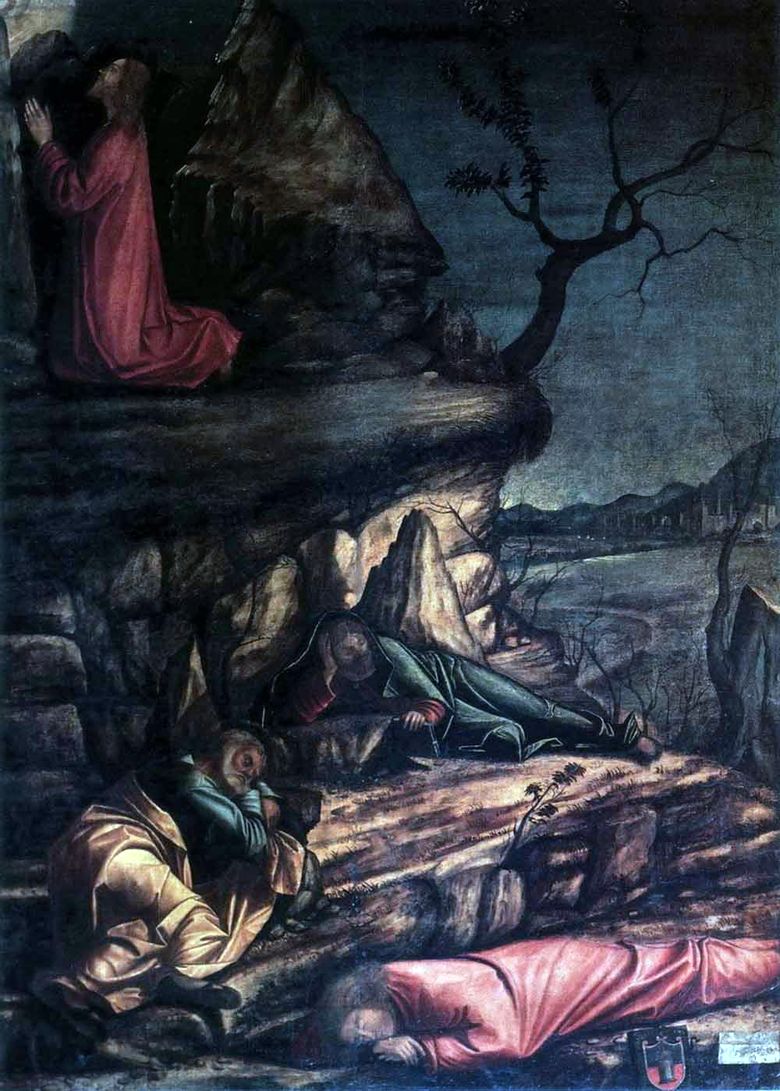
Each picture from the cycle for Scuola di San Giorgio is more independent, self-contained than the pictures of the cycle of Saint Ursula. This is due primarily to the fact that the paintings from Scuola di San Giorgio are not linked by a single narrative. The cycle breaks up into three series, one of which is dedicated to St. Jerome, the other to Saint George, and the third one is altogether eclectic. The cycle of St. Jerome is made up of three canvases that are the same size.
Together with the evangelical paintings, they occupy the entire right wall of the room. Obviously, all three – St. Jerome leads to the monastery of the lion, “The Death of Saint Jerome” and the Vision of St. Augustine “- were written before the other paintings of the cycle.” One of them even contains Carpaccio’s own litter: 1502 “.
As can be seen from the surviving compositional sketches of the master, he paid most attention to the background. He studied it in all its details at the preparatory stage, while the characters in the figures indicated very schematically.
Perhaps the artist was not very interested in the subjects proposed by the brotherhood of St. George, and so he recouped “against the background?” Although, despite this, working for him, he created one of his best paintings, vying with the Dream of St. Ursula “by fame. On the other hand, is not this materiality of the cell of the saint, is not this habitual life “so faithfully conveyed by Carpaccio makes the Vision of St. Augustine” so attractive?
 Saint Jérôme mène au monastère d’un lion – Vittorio Carpaccio
Saint Jérôme mène au monastère d’un lion – Vittorio Carpaccio Prayer for the Chalice by Vittorio Carpaccio
Prayer for the Chalice by Vittorio Carpaccio Farewell to the parents by Vittorio Carpaccio
Farewell to the parents by Vittorio Carpaccio Prière pour le calice – Vittorio Carpaccio
Prière pour le calice – Vittorio Carpaccio Arrival of Saint Ursula and pilgrims to Cologne by Vittore Carpaccio
Arrival of Saint Ursula and pilgrims to Cologne by Vittore Carpaccio St. George, striking the dragon by Vittore Carpaccio
St. George, striking the dragon by Vittore Carpaccio The dream of Saint Ursula by Vittorio Carpaccio
The dream of Saint Ursula by Vittorio Carpaccio St. Augustine by Vittore Carpaccio
St. Augustine by Vittore Carpaccio